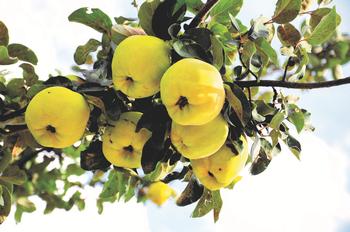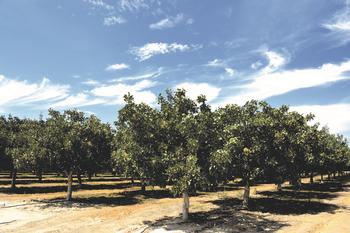The chill factor – when cold is good for your plants
-
Wendy Irving
-
In autumn, as nights grow longer and temperatures plunge, many trees and plants go “dormant.” What does this mean aside from gorgeous fall foliage? Dormancy is a defense mechanism that allows plants to survive winter’s tough environment. It is brought on by what is called abscission and leaf senescence, when leaves, fruit, and flowers change color, wither and drop. These processes are triggered by cold temperatures and decreasing photosynthesis, which releases inhibitory plant hormones to stop the growth and protect the plant. Dormancy sounds harsh, but it is a wonderful rest period for plants. When stored, carbohydrates keep the plant happy on low-level respiration until it can burst forth when conditions are more favorable in springtime. During dormancy, growth will not occur even under ideal conditions, preventing plants from prematurely budding during unseasonal warmer weather and then suffering damage from frosts that may come after.
 Quince, with a chill factor of only 100 to 300 hours, is a good fruit tree choice for many Marin microclimates. Dreamstime
Quince, with a chill factor of only 100 to 300 hours, is a good fruit tree choice for many Marin microclimates. DreamstimeFor many trees and plants, some “magic” has to occur during dormancy to enable them to break out of this resting period into full vigor come springtime. This phenomenon, called vernalization, requires that certain plants be exposed to cold temperatures for a sufficient time during winter to reverse the dormancy process and continue the expected growth, flowering, and fruiting process. The chilling requirement is the cumulative number of hours exposed to temperatures between 32° and 45° Fahrenheit required to break dormancy. When the chilling requirement is met, dormancy is technically broken, but plant growth may not appear until environmental conditions improve with the approaching spring.
If a plant or tree does not receive the required number of cumulative chilling hours to interrupt dormancy, problems can develop. The yield can be reduced with fruit trees, and the fruit quality is subpar. Other plants may see sparse growth and fewer or delayed blooms or no blooms. The future of pistachio growing in CA is threatened by climate change as these trees have a high requirement of chill hours (average 900). Dreamstime
The future of pistachio growing in CA is threatened by climate change as these trees have a high requirement of chill hours (average 900). DreamstimeChilling requirements to break dormancy vary widely. Each species has a unique need to maintain healthy development. For example, pome fruits trees, such as apple, pear, quince, and pomegranate, range from as low as 200 hours for pomegranate, 300 hours for quince, and between 350 to 1200 hours for pear varieties and between 400 to 1500 hours for apple varieties!
If you want to plant a new fruit tree, looming climate change makes the chill factor a major consideration. The huge importance of fruit and nut production to the economy of California is causing the scientific community at the University of California to look closely at how projected climate change will impact the industry's future. Studies have shown that winter chill in California has declined substantially over the last 70 years, and project that by 2100 winter chill hours in major growing areas may be as little as 500. The good news is that in recent years, many low-chill varieties of popular fruit and nut trees have been developed (Low chill hours are considered to be less than 300.) As a Mediterranean climate, Marin has always been conducive to low-chill varieties, so perhaps your existing trees will stand the test of time. But if you want to plant new, productive trees, consider your microclimate and be aware.
Google the UC Davis Fruit and Nut Research information Center or UC’s California Backyard Orchard. These two websites will have the information you need to choose the right fruit tree for your garden, including chill requirements. You can also speak with your local nursery or call the Marin Master Gardeners Help Line.


